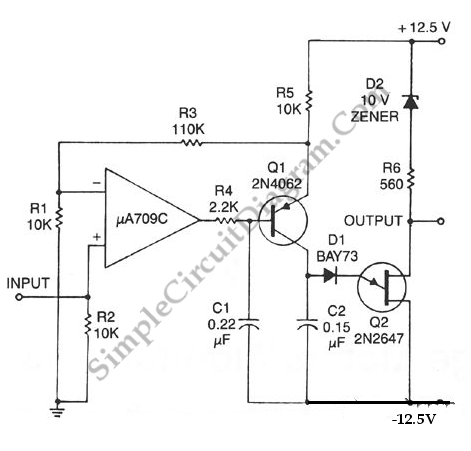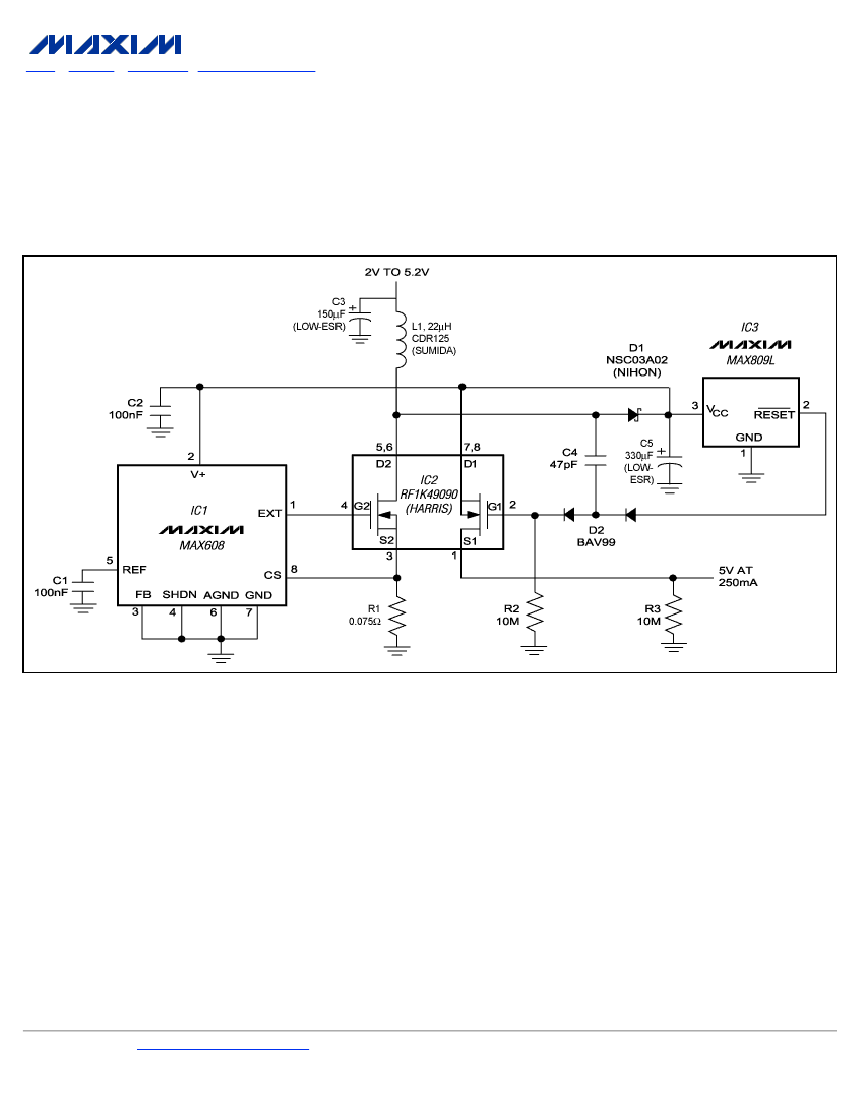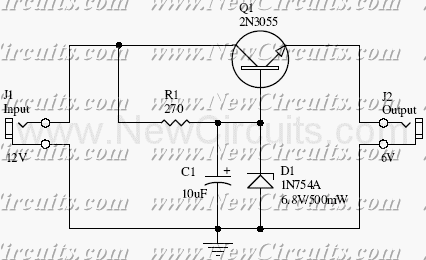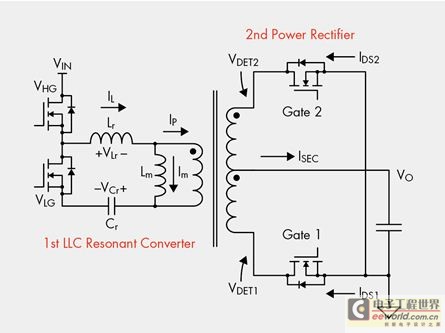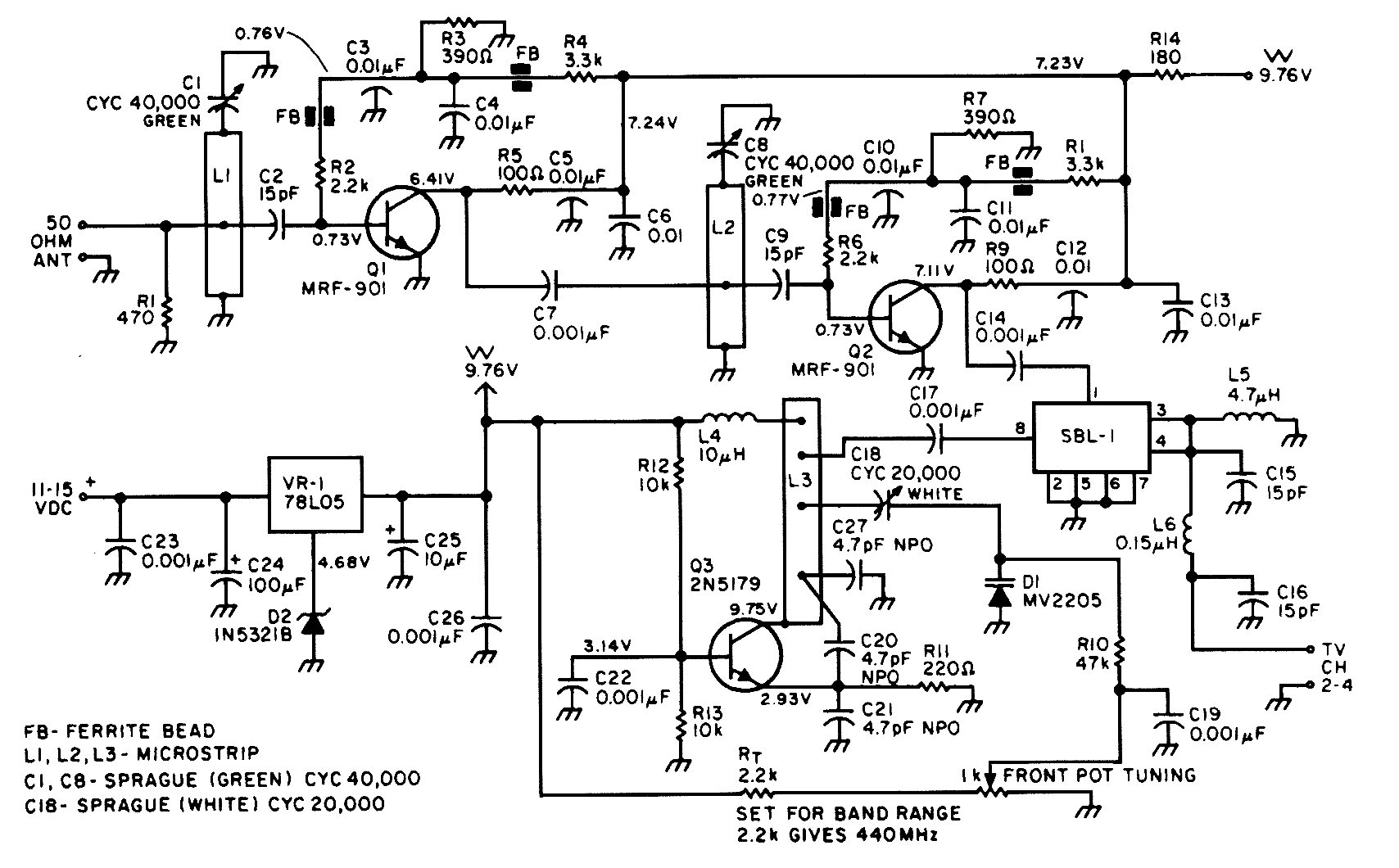
Vlf converter
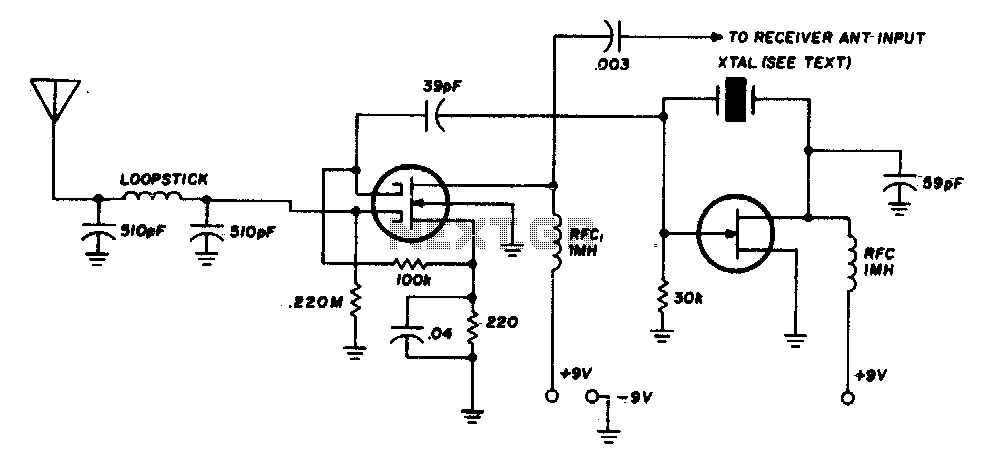
This converter employs a low-pass filter in place of the conventional tuned circuit, necessitating tuning solely on the receiver side. The dual-gate MOSFET and FET utilized in the mixer and oscillator are not critical components. Any crystal with a frequency that aligns with the receiver's tuning range can be employed. For instance, with a 3500 kHz crystal, the receiver dial indicates zero kHz at 3500 kHz, 100 kHz at 3600 kHz, and 200 kHz at 3700 kHz, among others. At 3500 kHz on the receiver, only the converter oscillator is audible, while very low frequency (VLF) signals begin to appear approximately 20 kHz higher.
This converter circuit design is characterized by the integration of a low-pass filter, which simplifies the tuning process by eliminating the need for a tuned circuit. The primary focus of tuning is shifted to the receiver, allowing for a more straightforward setup. The use of dual-gate MOSFETs and FETs in the mixer and oscillator stages provides flexibility in component selection, as these elements are not critical to the circuit's performance.
The oscillator's operation is determined by the crystal frequency, which must be compatible with the receiver's tuning range. The example provided illustrates the relationship between the crystal frequency and the receiver dial readings. When a 3500 kHz crystal is used, the receiver is set to 3500 kHz, which corresponds to a zero kHz output. As the receiver dial is adjusted, the frequency readings change linearly; for instance, tuning to 3600 kHz yields an output of 100 kHz, and tuning to 3700 kHz results in an output of 200 kHz.
Furthermore, it is noteworthy that at the setting of 3500 kHz, the primary signal detected is that of the converter’s oscillator. As the frequency is increased, particularly around 20 kHz above the initial setting, very low frequency (VLF) signals begin to emerge. This behavior is crucial for users who may be interested in receiving VLF signals, as it indicates the operational range of the converter in relation to the receiver's tuning capabilities. Overall, the circuit design provides a robust solution for frequency conversion while maintaining ease of use and flexibility in component selection.This converter uses a low-pass filter instead of the usual tuned circuit so the only tuning required is with the receiver. The dual-gate MOSFET and FET used in the mixer and oscillator aren"t critical. Any crystal having a frequency compatible with the receiver tuning range may be used. For example, with a 3500 kHz crystal, 3500 kHz on the receiver dial corresponds to zero kHz; 3600 to 100 kHz; 3700 to 200 kHz, etc
(At 3500 khz on the receiver all one can hear is the converter oscillator, and VLF signals start to come in about 20 kHz higher). 🔗 External reference
This converter circuit design is characterized by the integration of a low-pass filter, which simplifies the tuning process by eliminating the need for a tuned circuit. The primary focus of tuning is shifted to the receiver, allowing for a more straightforward setup. The use of dual-gate MOSFETs and FETs in the mixer and oscillator stages provides flexibility in component selection, as these elements are not critical to the circuit's performance.
The oscillator's operation is determined by the crystal frequency, which must be compatible with the receiver's tuning range. The example provided illustrates the relationship between the crystal frequency and the receiver dial readings. When a 3500 kHz crystal is used, the receiver is set to 3500 kHz, which corresponds to a zero kHz output. As the receiver dial is adjusted, the frequency readings change linearly; for instance, tuning to 3600 kHz yields an output of 100 kHz, and tuning to 3700 kHz results in an output of 200 kHz.
Furthermore, it is noteworthy that at the setting of 3500 kHz, the primary signal detected is that of the converter’s oscillator. As the frequency is increased, particularly around 20 kHz above the initial setting, very low frequency (VLF) signals begin to emerge. This behavior is crucial for users who may be interested in receiving VLF signals, as it indicates the operational range of the converter in relation to the receiver's tuning capabilities. Overall, the circuit design provides a robust solution for frequency conversion while maintaining ease of use and flexibility in component selection.This converter uses a low-pass filter instead of the usual tuned circuit so the only tuning required is with the receiver. The dual-gate MOSFET and FET used in the mixer and oscillator aren"t critical. Any crystal having a frequency compatible with the receiver tuning range may be used. For example, with a 3500 kHz crystal, 3500 kHz on the receiver dial corresponds to zero kHz; 3600 to 100 kHz; 3700 to 200 kHz, etc
(At 3500 khz on the receiver all one can hear is the converter oscillator, and VLF signals start to come in about 20 kHz higher). 🔗 External reference
Warning: include(partials/cookie-banner.php): Failed to open stream: Permission denied in /var/www/html/nextgr/view-circuit.php on line 713
Warning: include(): Failed opening 'partials/cookie-banner.php' for inclusion (include_path='.:/usr/share/php') in /var/www/html/nextgr/view-circuit.php on line 713
